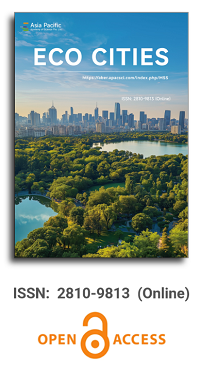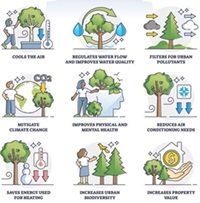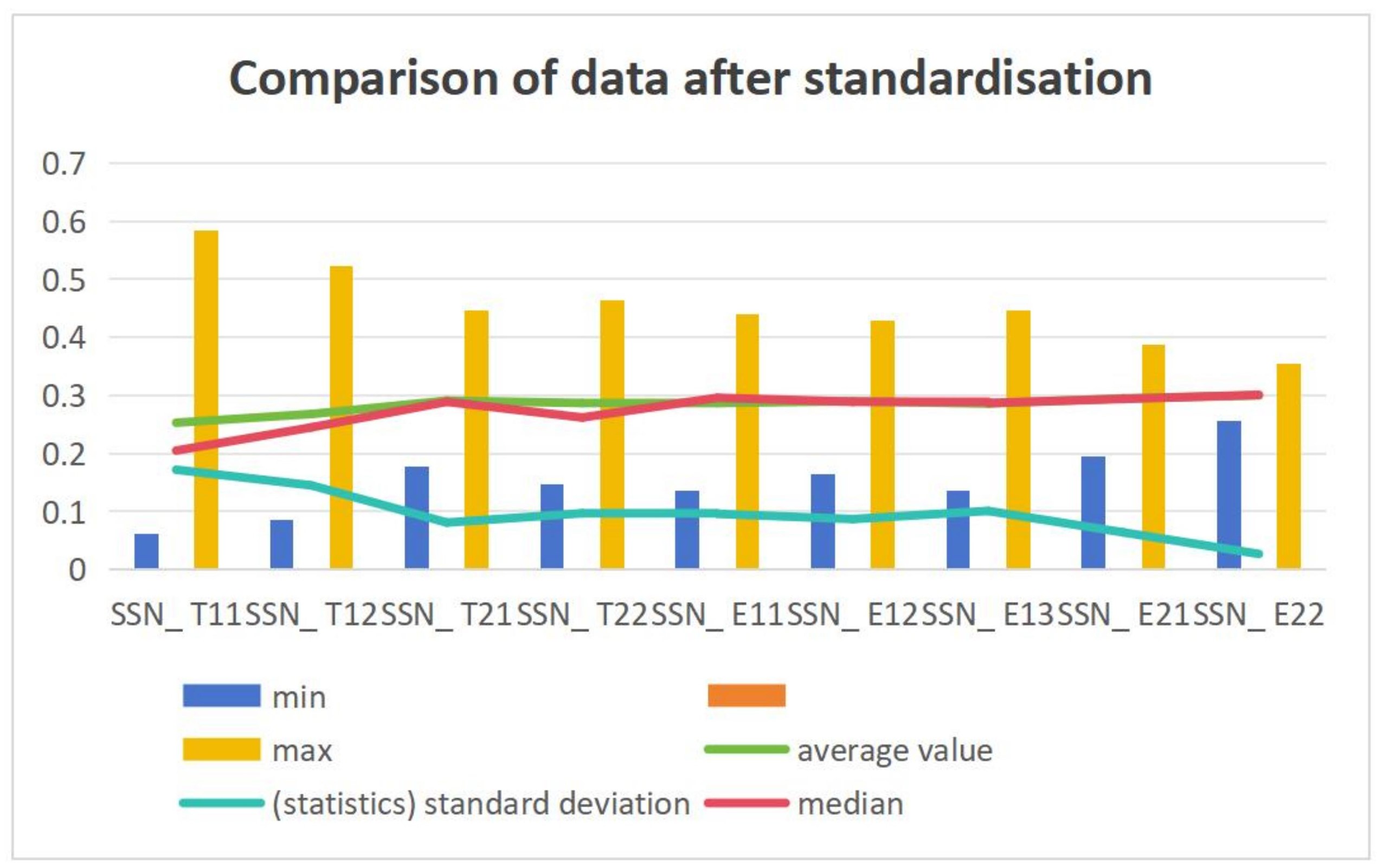


Investigating residents’ willingness to participate in urban edible landscaping: Perspectives from China
Vol 4, Issue 1, 2023
Download PDF
Abstract
In the context of the persistent food crisis and shifting societal dynamics, the concept of ‘edible landscaping’ has garnered increasing attention. Edible landscaping entails integrating food production into urban green spaces, offering a novel approach to address both food security and environmental sustainability. However, in China, conflicts regarding urban green spaces have arisen due to inadequate legal frameworks and management strategies. Gaining a better understanding of residents’ behavioral intentions and willingness to participate will provide support for future intervention measures by decision-makers. This study proposes an extended model based on the Theory of Planned Behavior to investigate the effects of individual attributes on behavioral intentions. An online questionnaire survey was conducted in Hefei, China, for hypothesis verification. The findings indicate that residents’ intention to participate in edible landscaping is influenced by perceived benefits and costs, attitudes, perceived behavioral control, and subjective norms. Multi-group analyses reveal the moderating effects of past behavior, age, and gender on the proposed models. This study underscores the significance of promoting the benefits of edible landscaping while mitigating unfavorable factors. Additionally, it is important to consider the specific needs of different population groups. These findings have practical implications for future planning, implementation, and management of edible landscaping initiatives.
Keywords
References
- Food Security Information Network. Global report on food crisis 2023. Available online: https://www.wfp.org/publications/global-report-food-crises-2023 (accessed on 2 May 2023).
- United Nations. Populations, 2022. Available online: https://www.un.org/zh/global-issues/population (accessed on 17 October 2022).
- Torero M. How to stop a looming food crisis. Foreign Policy. Available online: https://foreignpolicy. com/2020/04/14/how-to-stop-food-crisis-coronavirus-economy-trade/ (accessed on 23 April 2020).
- UN News. COVID-19: The global food supply chain is holding up, for now. Available online: https://news.un.org/en/story/2020/04/1061032 (accessed on 23 April 2020).
- Beltrami S. How To Minimize The Impact of Coronavirus on Food Security. World Food Programme (WFP); 2020.
- Zheng ZW, Chou RJ. The impact and future of edible landscapes on sustainable urban development: A systematic review of the literature. Urban Forestry & Urban Greening 2023; 84: 127930. doi: 10.1016/j.ufug.2023.127930
- Chou CC, Aoki Y, Yoh K, et al. New local design in the new normal: Sustainable city for outbreak risk. IATSS Research 2021; 45(4): 395–404. doi: 10.1016/j.iatssr.2021.10.001
- Killgore WDS, Cloonan SA, Taylor EC, Dailey NS. Loneliness: A signature mental health concern in the era of COVID-19. Psychiatry Research 2020; 290: 113117. doi: 10.1016/j.psychres.2020.113117
- Stickley A, Koyanagi A. Loneliness, common mental disorders and suicidal behavior: Findings from a general population survey. Journal of Affective Disorders 2016; 197: 81–87. doi: 10.1016/j.jad.2016.02.054
- Shi L, Lu ZA, Que JY, et al. Prevalence of and risk factors associated with mental health symptoms among the general population in China during the coronavirus disease 2019 pandemic. JAMA Network Open 2020; 3(7): e2014053. doi: 10.1001/jamanetworkopen.2020.14053
- Sardeshpande M, Rupprecht C, Russo A. Edible urban commons for resilient neighbourhoods in light of the pandemic. Cities 2021; 109: 103031. doi: 10.1016/j.cities.2020.103031
- Theodorou A, Panno A, Carrus G, et al. Stay home, stay safe, stay green: The role of gardening activities on mental health during the Covid-19 home confinement. Urban Forestry & Urban Greening 2021; 61: 127091. doi: 10.1016/j.ufug.2021.127091
- Elands BH, Vierikko K, Andersson E, et al. Biocultural diversity: A novel concept to assess human-nature interrelations, nature conservation and stewardship in cities. Urban Forestry & Urban Greening 2019; 40: 29–34. doi: 10.1016/j.ufug.2018.04.006.
- Edible landscape. Edible way; 2016. Available online: http://edibleway.org/ (accessed on 23 April 2022).
- Combines wastewater treatment technology with food production as a “Closed-Loop Urban Farming Approach”. Available online: http://www.roofwaterfarm.com/en/ (accessed on 23 April 2022).
- Growing your own food will reconnect one with nature, conserve natural resources, and cultivate a sense of community. Available online: https://www.ediblegardencity.com/ (accessed on 23 April 2022).
- Burke, C. Contested desires: The edible landscape of school. Paedagogica Historica 2005; 41(4–5): 571–587. doi: 10.1080/00309230500165767
- Corrigan MP. Growing what you eat: Developing community gardens in Baltimore, Maryland. Applied Geography 2011; 31(4): 1232–1241. doi: 10.1016/j.apgeog.2011.01.017
- Guitart D, Pickering C, Byrne J. Past results and future directions in urban community gardens research. Urban Forestry & Urban Greening 2012; 11(4): 364–373. doi: 10.1016/j.ufug.2012.06.007
- Hartwig KA, Mason M. Community gardens for refugee and immigrant communities as a means of health promotion. Journal of Community Health 2016; 41: 1153–1159. doi: 10.1007/s10900-016-0195-5
- Krasny ME, Tidball KG. Community gardens as contexts for science, stewardship, and civic action learning. Cities and the Environment (CATE) 2009; 2(1): 8. doi: 10.15365/cate.2182009
- He B, Zhu J. Constructing community gardens? Residents’ attitude and behaviour towards edible landscapes in emerging urban communities of China. Urban Forestry & Urban Greening 2018; 34: 154–165. doi: 10.1016/j.ufug.2018.06.015
- Ministry of Agriculture, Forestry and Fisheries. Urban Agriculture Promotion Basic Law (Japanese). Available online: https://www.maff.go.jp/j/nousin/kouryu/tosi_nougyo/kihon.html (accessed on 23 April 2022).
- Institute of Urban Agriculture, Chinese Academy of Agricultural Sciences. Exploring Urban Agriculture. Available online: https://iua.caas.cn/xkqk/xk/225776.htm (accessed on 23 April 2022).
- The Central People’s Government of the People’s Republic of China. National Sustainable Agricultural Planning (2015–2030). Available online: http://www.gov.cn/gongbao/content/2015/content_2941167.htm (accessed on 23 April 2022).
- Zhu J, He BJ, Tang W, Thompson S. Community blemish or new dawn for the public realm? Governance challenges for self-claimed gardens in urban China. Cities 2020; 102: 102750. doi: 10.1016/j.cities.2020.102750
- Zheng H, Akita N, Zhang F. Study of residents’ willingness to construct community gardens in the post-epidemic era investigation from Wuhan. International Review for Spatial Planning and Sustainable Development 2022; 10(3): 33–49. doi: 10.14246/irspsd.10.3_33
- Wu C, Li X, Tian Y, et al. Chinese residents’ perceived ecosystem services and disservices impacts behavioral intention for urban community garden: An extension of the Theory of Planned Behavior. Agronomy 2022; 12(1): 193. doi: 10.3390/agronomy12010193
- Ajzen I. The theory of planned behaviour: Reactions and reflections. Psychology & Health 2011; 26(9): 1113–1127. doi: 10.1080/08870446.2011.613995
- Ajzen I. The Theory of Planned Behavior. Organizational Behavior and Human Decision Processes 1991; 50(2): 197–211. doi: 10.1016/0749-5978(91)90020-T
- Li Q, Long R, Chen H. Differences and influencing factors for Chinese urban resident willingness to pay for green housings: Evidence from five first-tier cities in China. Applied Energy 2018; 229: 299–313. doi: 10.1016/j.apenergy.2018.07.118
- Ajzen I. Perceived behavioral control, self-efficacy, locus of control, and the theory of planned behavior 1. Journal of Applied Social Psychology 2002; 32(4): 665–683. doi: 10.1111/j.1559-1816.2002.tb00236.x
- Chen MF, Tung PJ. Developing an extended Theory of Planned Behavior model to predict consumers’ intention to visit green hotels. International Journal of Hospitality Management 2014; 36: 221–230. doi: 10.1016/j.ijhm.2013.09.006
- Bang H, Odio MA, Reio T. The moderating role of brand reputation and moral obligation: An application of the Theory of Planned Behavior. Journal of Management Development 2014; 33(4): 282–298. doi: 10.1108/JMD-12-2010-0102
- Zhang L, Yang X, Fan Y, Zhang J. Utilizing the Theory of Planned Behavior to predict willingness to pay for urban heat island effect mitigation. Building and Environment 2021; 204: 108136. doi: 10.1016/j.buildenv.2021.108136
- Steg L, Vlek C. Encouraging pro-environmental behaviour: An integrative review and research agenda. Journal of Environmental Psychology 2009; 29(3): 309–317. doi: 10.1016/j.jenvp.2008.10.004
- Zhang X, Bai X, Shang J. Is subsidized electric vehicles adoption sustainable: Consumers’ perceptions and motivation toward incentive policies, environmental benefits, and risks. Journal of Cleaner Production 2018; 192: 71–79. doi: 10.1016/j.jclepro.2018.04.252
- Bamberg S, Möser G. Twenty years after Hines, Hungerford, and Tomera: A new meta-analysis of psycho-social determinants of pro-environmental behaviour. Journal of Environmental Psychology 2007; 27(1): 14–25. doi: 10.1016/j.jenvp.2006.12.002
- Chen CF. Factors affecting the decision to use autonomous shuttle services: Evidence from a scooter-dominant urban context. Transportation Research Part F: Traffic Psychology and Behaviour 2019; 67: 195–204. doi: 10.1016/j.trf.2019.10.016
- Tiraieyari N, Ricard RM, McLean GN. Factors influencing volunteering in urban agriculture: Implications for recruiting volunteers. Urban Forestry & Urban Greening 2019; 45: 126372. doi: 10.1016/j.ufug.2019.126372
- Zypchyn K. Getting back to the garden: Reflections on gendered behaviours in home gardening. Earth Common Journal 2012; 2(1). doi: 10.31542/j.ecj.60
- Chalmin-Pui LS, Griffiths A, Roe J, et al. Why garden?—Attitudes and the perceived health benefits of home gardening. Cities 2021; 112: 103118. doi: 10.1016/j.cities.2021.103118
- Quellette JA, Wood W. Habit and intention in everyday life: The multiple processes by which past behavior predicts future behavior. Psychological Bulletin 1988; 124(1): 54–74. doi: 10.1037/0033-2909.124.1.54
- Bentler PM, Speckart G. Attitudes “cause” behaviors: A structural equation analysis. Journal of Personality and Social Psychology 1981; 40(2): 226–238. doi: 10.1037/0022-3514.40.2.226
- Johnston RJ. Ecosystem services. Encyclopedia Britannica. Available online: https://www.britannica.com/science/ecosystem-services (accessed on XX).
- Lin J, Zhou M, Luo H, et al. Analysis of the emotional identification mechanism of campus edible landscape from the perspective of emotional geography: An empirical study of a Chinese university town. International Journal of Environmental Research and Public Health 2022; 19(18): 11425. doi: 10.3390/ijerph191811425
- Lee JH, Matarrita-Cascante D. The influence of emotional and conditional motivations on gardeners’ participation in community (allotment) gardens. Urban Forestry & Urban Greening 2019; 42: 21–30. doi: 10.1016/j.ufug.2019.05.006
- Ding X, Zhang Y, Zheng J, Yue X. Design and social factors affecting the formation of social capital in Chinese community garden. Sustainability 2020; 12(24): 10644. doi: 10.3390/su122410644
- Perera LN, Mafiz AI, Amarasekara NR, et al. Antimicrobial-resistant E. coli and Enterococcus spp. Recovered from urban community gardens. Food Control 2020; 108: 106857. doi: 10.1016/j.foodcont.2019.106857
- Ketchen DJ. A primer on partial least squares structural equation modeling. Long Range Planning 2013; 46(1–2): 184–185. doi: 10.1016/j.lrp.2013.01.002
- Marsh HW, Hocevar D. Application of confirmatory factor analysis to the study of self-concept: First-and higher order factor models and their invariance across groups. Psychological Bulletin 1985; 97(3): 562–582. doi: 10.1037/0033-2909.97.3.562
- MacCallum RC, Browne MW, Sugawara HM. Power analysis and determination of sample size for covariance structure modeling. Psychological Methods 1996; 1(2): 130–149. doi: 10.1037/1082-989X.1.2.130
- Hooper D, Coughlan J, Mullen MR. Structural equation modelling: Guidelines for determining model fit. The Electronic Journal of Business Research Methods 2008, 6(1): 53–60.
- Fornell C, Larcker DF. Evaluating structural equation models with unobservable variables and measurement error. Journal of Marketing Research 1981; 18(1): 39–50. doi: 10.1177/002224378101800104
- Sudman S. Applied Sampling. Academic Press; 1976.
- Bamberg S. How does environmental concern influence specific environmentally related behaviors? A new answer to an old question. Journal of Environmental Psychology 2003; 23(1): 21–32. doi: 10.1016/S0272-4944(02)00078-6
- Li L, Zhang Y. An extended Theory of Planned Behavior to explain the intention to use carsharing: A multi-group analysis of different sociodemographic characteristics. Transportation 2023; 50(1): 143–181. doi: 10.1007/s11116-021-10240-1
- Marshall AJ, Grose MJ, Williams NSG. Of mowers and growers: Perceived social norms strongly influence verge gardening, a distinctive civic greening practice. Landscape and Urban Planning 2020; 198: 103795. doi: 10.1016/j.landurbplan.2020.103795
- Ajzen I. Constructing a theory of planned behavior questionnaire. Available online: http://people.umass.edu/aizen/pdf/tpb.measurement.pdf (accessed on 25 April 2023).
Supporting Agencies
Copyright (c) 2023 Yansha Xiao, Chun-Chen Chou, Kenji Doi, Kento Yoh
License URL: https://creativecommons.org/licenses/by/4.0/

This site is licensed under a Creative Commons Attribution 4.0 International License (CC BY 4.0).

Chinese Academy of Sciences, China
Indexing & Archiving
Asia Pacific Academy of Science Pte. Ltd. (APACSCI) specializes in international journal publishing. APACSCI adopts the open access publishing model and provides an important communication bridge for academic groups whose interest fields include engineering, technology, medicine, computer, mathematics, agriculture and forestry, and environment.



.jpg)

.jpg)



